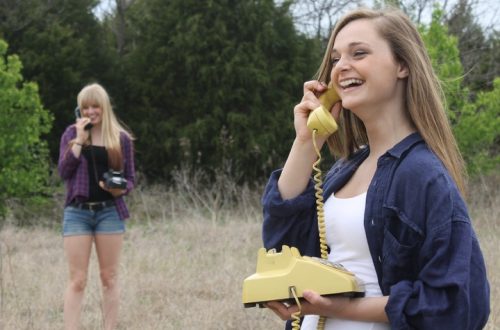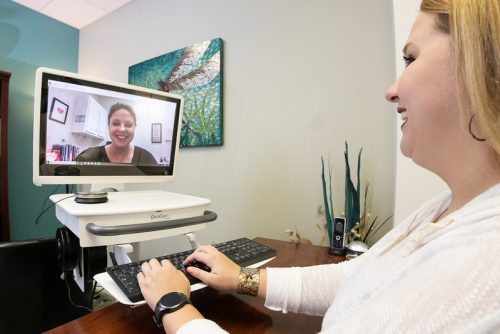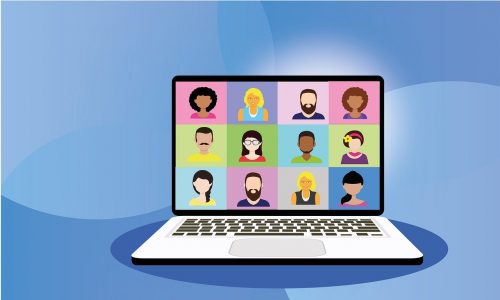Many of us are in home-quarantine, relying on laptops and mobile phones to stay connected. Since we use them in school and at work, we’ve grown attached to our devices, but this pandemic made us realize that digital connections are a must. With the COVID-19 crisis putting pressure on our physical, emotional, and mental well-being, it also affects our interpersonal relationships.
Experts argue that we can no longer go back to the old normal. As restaurants, transportation, and office establishments prepare to open, the new normal would require us to temperature checks and entry registrations for contact tracing measures. Overnight, we added the phrase “social distancing” into our vernacular and installed videoconferencing apps on our computers.

Source: pxhere.com
This pandemic saw us turning to remote workers for advice. However, they have also encountered challenges staying at home, breaking routine social interactions used to balance the amount of time they were isolated. Even long-distance couples have some tips to overcome loneliness, but not all of our connections are intimate relationships that we can straightaway bond over our LED screens.
Pandemic Blues
Psychologists say that more people are prone to social anxiety because we are opening up our homes and personal spaces to others, even in professional contexts. Quarantine-induced Zoom fatigue is real. The simple fact is that every video conference reminds us of how much our lives have changed, how we’ve lost connections and opportunities, and how unlikely it is for the situation to be “business as usual.”
Due to unprecedented scenarios, workplace managers and school teachers had to figure out the new classroom and office dynamics. We hear questions like “How much time should I see my students online? How frequently should I hold department meetings with my staff?” Nobody could have prepared us for this, yet we strive to become resilient and test out what works. How do we overcome the pressures of remote relationships amidst the pandemic?
Virtual Safe Spaces
COVID-19 urged mental health practitioners to move to virtual counseling, also known as teletherapy. The Kaiser Family Foundation conducted a survey and found 45% of Americans reported feeling distressed due to pandemic circumstances. The study enumerated concerns like financial strain, social isolation, and fear of infection, especially for frontline workers in healthcare and essential services.

Source: flickr.com
“Teletherapy has been more difficult for my consumers under the age of 12 because they’re looking all around, asking me 101 questions,” says Dr. DeAnna Murphy, LPC, a licensed professional counselor who practices in Chapel Hill, North Carolina. Since the quarantine started, she’s received an uptick in calls from people dealing with anxiety and depression. Virtual therapy sessions have some advantages as well as disadvantages.
- Recreating The Space
Taking the velvet couch from a therapist’s office to a Zoom call is the biggest challenge. Individuals will have to replicate the comfort and ambiance in their own homes, which, for some, might be the source of anxiety in the first place. To overcome this, Murphy suggests her clients sit in the car or walk around the block and call her.
- Keeping Privacy
Sometimes, loneliness intensifies even when we’re sharing a space with other people. COVID-19 has us leaning onto our friends, partners, family, and colleagues. At some point, everyone’s bound to feel emotionally overloaded, so having a therapist or counselor can help.
- Saving Resources
For clients undergoing in-person therapy, an appointment would typically take two hours, including travel time, while a virtual session can be over in fifty minutes. Murphy says teletherapy works well for individuals with mild symptoms, which means lower anxiety levels or less debilitating depression.

Source: pixabay.com
Online fatigue and long-distance relationships can take a toll on our health. We should learn how to identify the triggers and specific stressors before we try to cope with them. Here are some examples:
- If a meeting doesn’t need to be a Zoom meeting, consider a phone call. Not seeing ourselves or 12 people on the screen can reduce stress linked to our self-consciousness.
- Swap your end-of-the-world dystopian reading lists with escapist fiction or romance novels. If your kids like to play video games, avoid themes of disease outbreaks or zombies.
- Conduct a pulse check and determine whether you’re jumping in a Zoom call because you want to or because you feel you have to. Joining calls that you’re not committed to adds to the strain when all you need at the moment is to get a break.
When every day turns out to be a test of competence, it’s easy to lose our direction when barriers break, spaces combine, and lines blur together. What we need to reclaim control of our relationships with others is to accept that we are tired. We need to recover using tools available to us and strengthen the ways we cope – both online and offline.
